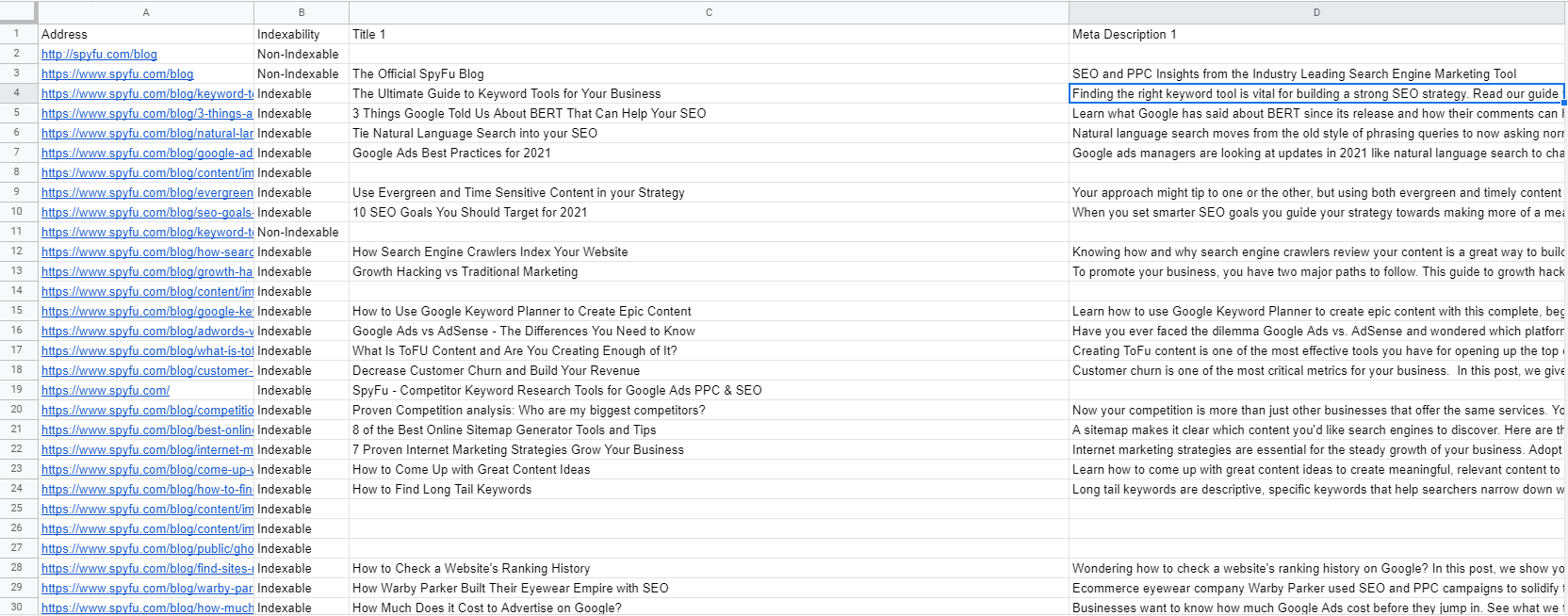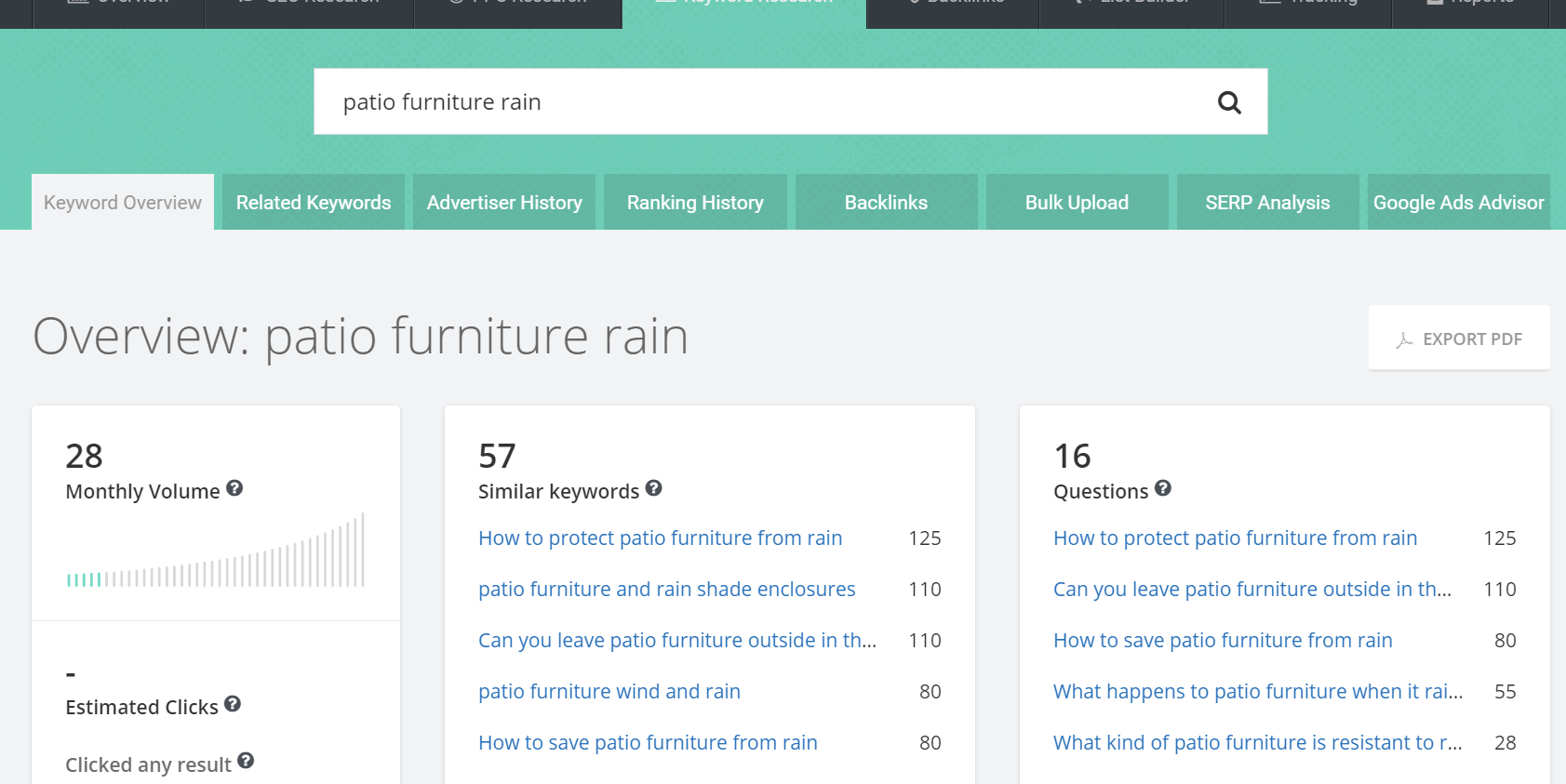Content gaps are exactly that—gaps in content where desired information doesn’t exist (or isn't easily found). For users, these gaps are annoying. But for content creators, they represent a golden opportunity.
Content gap analysis—the process of finding and filling these gaps—can help you find new readers and bring more value to your existing audience. Do it right, and you’ll worry less about your competitors, knowing your content is in a league of its own.
What Is Content Gap Analysis?
Content gap analysis is the process of anticipating what content your audience needs, determining how well your own content currently meets those needs, and then working to fill in any gaps that exist between those two realities.
We do content gap analysis because content is one of the strongest ways to provide value, build trust, and grow your customer base online. In fact, 96% of surveyed marketers said that content marketing has improved their trust and credibility in the eyes of their readers. While other research found that 74% of companies report getting more leads and more quality leads from content marketing.
Creating content that grows and strengthens your customer base starts with content gap analysis.
- Understand what content you have on your website (and what value it brings to your customers)
- Use knowledge of your customers to identify content gaps that you can fill
- Use knowledge of the market to identify content gaps that you can fill
With the gaps identified, you can create new content that boosts readers’ trust in your brand. Customers want brands that they can trust, and this trust is built through consistently valuable interactions with a company—including any and all content on their website.
The next three steps in this guide will walk you through how to make sure your website is filled with the consistent, valuable information that customers are looking for. Let’s get started.
Step 1: Do a Rigorous Content Audit
To determine whether there are gaps in your existing content, you need to have a well-organized view of what you have already created. Get a sense of your existing content by conducting an audit of your entire site.
To complete a content audit, you’ll need a list of all of your website’s assets on one spreadsheet. Depending on the size of your website, listing all of the URLs could be a pretty hefty task.
To make your list quickly and easily, we recommend using Screaming Frog, a website crawler that does the grunt work for you. Screaming Frog will crawl your website, like Google does when they index your site, and list out each URL in your domain and include relevant information, like headers and whether the link is healthy or not. Screaming Frog will crawl 500 pages of a website for free. After that, it costs £199.00 a year (USD $259).
Once you download Screaming Frog, open it up, put in your domain, and start the crawl. When the crawl finishes, you can click export to download a CSV file.

After you export your CSV file, you can open it in a program like Google Sheets or Excel to start analyzing what you have.
We recommend that you clean up the spreadsheet by removing any columns that aren’t useful for you right now. In this example, we have kept the address, whether it’s indexable, the title, and the meta-description so that you have a clear list of all your content in front of you.

To analyze your content, ask a series of questions that will help you gauge the value of what you have.
- What part of the funnel is this content aimed at? It’s important that you cover the entire buyer’s journey, from the top to the bottom of the sales funnel, with your content. We will be analyzing this question in Step 2, but if you want to learn more, you can read about it in our post on creating a content marketing strategy.
- What need does the content satisfy? In your own words, jot down the purpose of this content and how it might provide value to someone. This works two-fold: it helps you learn how to measure success of the page, and it keeps you focused as you outline your must-have themes and topics.
- Is this post as thorough as it could be? Consider whether it is well-written, whether the information is up to date, and which subtopics could use fleshing out. This is tough when you're the author, because you've likely tapped your own ideas, including everything you could imagine. An unbiased content analysis can help you find out what you are missing.
- How is the content being received by customers? Is it getting views? Are people interacting with it, or are they bouncing right away? Is it ranking on Google for any keywords that are of use to you? Check back with item #2 so you aren't fitting the results to what you want them to mean.
- Is this share-worthy? Share-worthy posts are deeply informative, or they have helpful elements broken down into memorable ways. Or they offer a fresher angle on some of the ideas that your competitors might be covering. It should also be easy-to-read, but not necessarily due to word choice or reading level. This means clear descriptions and formatting that breaks down walls of text.
Be as honest with yourself as possible when answering these questions. Mark down your answers in separate columns beside each URL on your list so that you can analyze it all later.
To see this at work, we can look at an older post from SpyFu that looks at Google Analytics tricks and tips and ask the questions we have posed above.

- What part of the funnel is this content aimed at? This is an educational post that isn’t directly related to SpyFu’s products, so it is more of a top-of-the-funnel piece of content.
- What need does the content satisfy? It helps people get the most out of Google Analytics, which is an important but notoriously complicated software platform.
- Is this post as good as it could be? One of the challenges is that Google Analytics is a growing, evolving toolset. It overhauled its platform into GA4 in 2023, so this article will always need ongoing updates.
- How is it being received by customers (bounce rate/views/engagement?) If we look on Google Search Console, we can see that this post’s numbers are trending down.
Based on our answer, we could say that this post is ready for an update. The idea is still good, and the pain point is still there, but this post is not doing everything it can to address it.
You will want to run through this process with each item on your list. After you answer these questions, determine whether this piece of content is good, needs work, or should be removed.
- Good content will pass all of the questions above by addressing a problem your readers are having and enjoying success among readers.
- Content that needs work is content that addresses a need but fails at either addressing it well or isn’t getting received well by your audience.
- Content that should be removed is content that is thin and no longer needed. Thin content hurts your overall SEO, so it is better off gone than sitting unused on your website.
By the end of this process, you should have a complete list of all of your content with information about its location in the sales funnel and the needs it is addressing. You should also know which pieces are good, which ones need work, and which ones can go. We want to focus on our good content and needs-work content now as we move forward in our content gap analysis.
Step 2: Identify Buyer’s Stage Content Gaps
To find gaps, start by identifying areas in the buyer’s journey where your content is not providing all of the answers people are looking for.
First, make a list of the needs or problems that your buyers will face as they progress from the top of the funnel to the bottom of the funnel.
You can get a sense of the problems your readers are facing in a couple of ways. Here are our favorites:
- Ask them: You can’t get any better answer than one directly from the source. Surveys or questionnaires can be great for understanding what support your current customers need.
- Read comments on your blog and social media posts: These areas are oftentimes goldmines of information that can help you get inside the heads of your readers.
- Check Quora and Reddit: Quora and Reddit are quickly becoming some of the best places on the internet to do audience research. Quora questions and subreddits in your sphere are direct lines into the problems and questions that are plaguing readers like yours.
- Keyword tools: Plug a subject into a keyword tool, and it will give you a long list of what searches people have been making on this topic. People use search engines to find answers to their questions, so if lots of people are searching for it, this is likely a common pain point for them.
- AnswerThePublic: AnswerThePublic collects and organizes questions people have about certain topics. Put in a word or two, and it will give you a list of questions people have been asking about this subject. These questions can show you what information people want to know about when researching your area of expertise.
Sort the problems you find through this research by content funnel stage. You want these problems categorized by funnel stages because it will help you see if you are neglecting any buyers with your content.
- Top of the Funnel (ToFu): This part of the funnel is dedicated to promoting awareness of your brand, typically through educational content that makes customers aware of potential problems they may face and solutions that you can provide.
Where to find ToFu problems: Look for them on Quora, Reddit, AnswerThePublic, or with a keyword tool. Keywords for ToFu are usually short tail, reflecting the more general problems you encounter at this funnel stage. You can generally expect keywords to become more long tail and problems to get more specific the further down the funnel you go. - Middle of the Funnel (MoFu): This part of the funnel is the evaluation stage where people who are aware of your solutions are considering whether they’re the right fit for their needs.
Where to find MoFu problems: Look for these problems on Reddit (where people compare multiple products, including your own), comments on your posts, and keyword tools. Potential MoFu customers will be asking questions to figure out whether your product fits their needs or is better than the competition. - Bottom of the Funnel (BoFu): The final section of the funnel is all about conversions. At this stage, you persuade your leads into becoming paying customers.
Where to find BoFu problems: Ask current leads or customers about their product or service-specific concerns. You may also find comments on your posts that reflect similar problems or points of confusion.
With your list complete, compare your existing content (based on your audit) with the identified problems from this research. Next to each problem, place the current article you have that addresses this problem. No worries if you have more than one.
Are there any problems that your content doesn’t address? These are the gaps in your content. Now that you know they exist, you can start to think about how to address them. To do that, we need to think about keywords.
Head over to SpyFu’s keyword overview tool and take a look at how people are searching for the particular problems you have listed.
Say you’re a website that sells outdoor furniture, and you’ve determined that one pain point people have is protecting patio furniture from the rain. You could type in “patio furniture rain,” and SpyFu would look for relevant keywords and questions people ask. In this case, the keyword it came up with was “How to protect patio furniture from rain,” which has 125 monthly searches.

Play around with this feature for every one of your identified content gaps and fill in potential keywords that you would like to target with your new content.
Step 3: Assess How Competitors Fill the Gaps
See how others are addressing the topics you plan to write about and which keywords they are targeting to attract readers. With this information, you can determine how to make your content stand out and outrank your competitors.
It is important to note that this tactic is not about copying your competitors. Competitors can be a useful secondary resource for figuring out what readers are looking for, but you should always bring everything back to your potential customers: what do they need, and how can you provide it in the best possible way?
Start by plugging in the keyword you may want to target on Google and see what is on the search engine result page (SERP). Read through the top five or so listings and see what kind of content they are offering. Consider:
- What information do they discuss?
- What kind of content is there?
- How can I give more value to a reader than the current top offerings?
This last point is the most important one. Here are some ideas on how you can create pieces that are stronger than the existing content from competitors.
- Explain concepts more succinctly, clearly, and comprehensively.
- Share expert insights from yourself or qualified co-workers.
- Add first-party data.
- Address questions/problems/topics that other pieces ignore.
- Add up-to-date information if the current pieces are getting old.
- Bring in a unique tool or interactive to help readers get more out of the topic, like a quiz to test their knowledge or a poll to see what other people think about the question,
Want to see this process of strengthening content in action? Consider a shoe company. Your customer is looking to buy a new pair of shoes. They’ve found a shoe they like, but they’re worried about buying the right size. With more and more shoe sales going online, many buyers face this serious pain point.
So how can you add value and help your customer?
Instead of offering a fairly standard size chart, you might offer a Fit Finder tool on your site like Vivobarefoot does. The Finder asks questions like how wide your foot is and what shoes you currently wear.
This feature gives potential customers peace of mind around buying a shoe that fits and encourages them to trust the shoe brand.
As you explore each keyword on Google’s SERP, take note of the main competitors you seem to be up against.
To explore content gaps further, put your main competitor into SpyFu’s competitors tool. While here, you can learn how you rank against other websites in your field and, more importantly, which pages of theirs are getting the most traffic.
Take a look at their top pages and see if you have missed a potential content area. If you want to take it a step further, you can run a competitive analysis on your top competitors to get insights into their overall marketing plan. You should never blindly follow their lead, but you can get some inspiration by seeing what is working for them.
After you have finally gone through everything—checking every SERP and planning to address each content gap you have found in your own research and on your competitors’ sites—your content gap analysis is done. From here, draw up a content calendar to bring these content ideas to life.
Get help with a content gap analysis
We've laid out a few ways to run a content gap analysis on your own. If any part of it seems daunting, don't let that stop you from moving ahead. An alternative approach might be a better option for you.
There are two wrinkles when you try to improve upon your own content. Most businesses use a dedicated person or small group to create their content. If that same creator is doing the updating, they have a built-in bias. Bias isn't about writing how your product is superior. Content-writing bias means that you know too much about what you offer. We call this a "curse of knowledge." When you work closely with positioning your services, describing your value, or adopting the product, it's hard to remember what it was like without it. You know your customer's biggest questions, but that curse of knowledge causes you to overlook the hidden, nuanced concerns that customers want to dig into during their research.
The other wrinkle is more about being tapped out. When you (as the original author) created the article, you wrote an outline and fleshed out the key topics to cover. You dug into every idea you had and, frankly, gave it your all. So what could you add to it that you didn't catch before? That angle is harder to see, so reading what competitors covered in similar content can be an eye opener.
A third-party tool like RivalFlow gives you an unbiased, content gap analysis. By using AI to review higher-ranking articles on your topic, it finds subtopics that you didn't cover or areas that could use more depth. This fights thin content that we mentioned above. And because it's run by AI, its analysis is more objective when comparing the two articles. That keeps egos or frustration from getting in the way of finding value in a competitor's ideas.
Never Stop Improving Your Content
Ideally, your site is a place where every piece of content addresses a customer’s concerns before they even start the process of searching for it. An annual or biannual content gap analysis can help you become the best version of your website—the website that your readers deserve: a one-stop-shop for everything (in your field). It’s a constant process of improvement, but with time and effort, you’ll win over your readers—and that’s what it’s all about.

